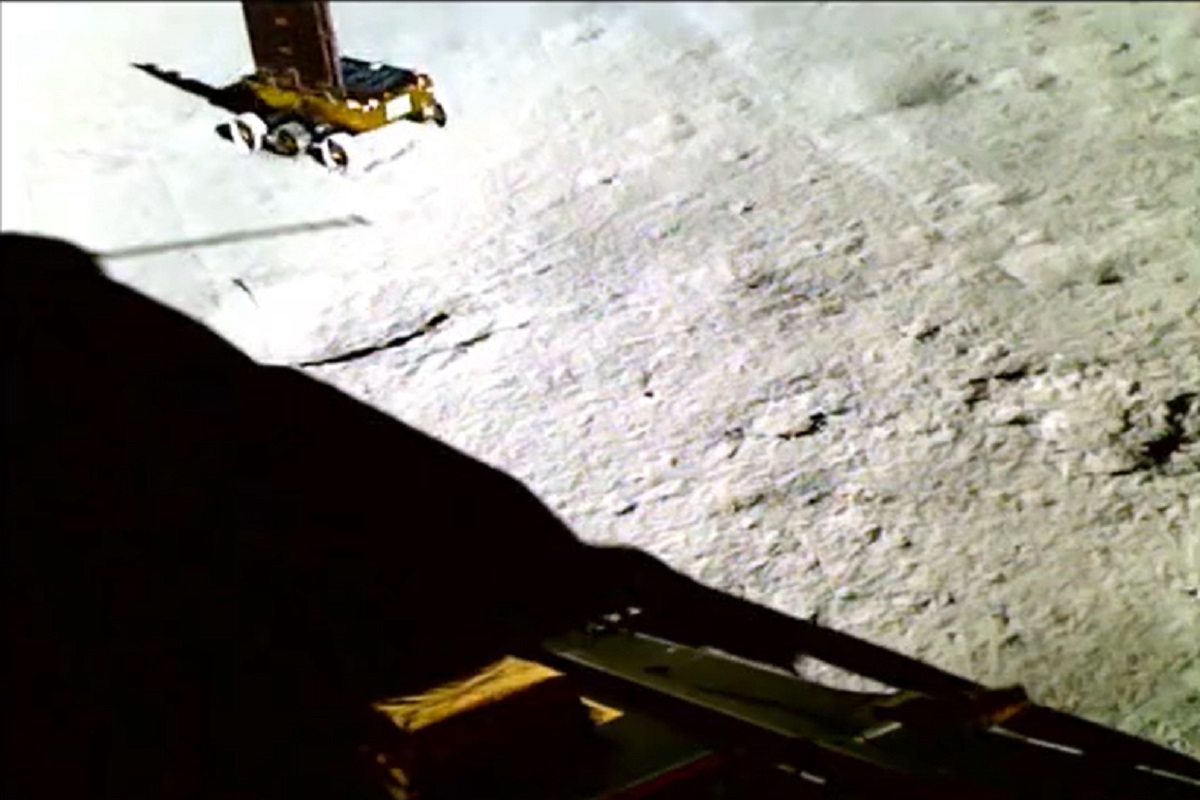After 14 days of being in oblivion, Chandrayaan 3’s Lander Vikram and Rover Pragyan are all set to wake up as new lunar day begins on Thursday. The Indian Space Research Organisation or ISRO will try to re-establish communication with Chandrayaan-3’s solar-powered lander Vikram and rover Pragyan on Saturday. Earlier, the revival attempt was scheduled to be made on Friday, but due to unknown reasons, it has been changed to Saturday.
“Earlier we planned to reactivate the (Pragyan) rover and (Vikram) lander on the evening of 22nd September, but due to some reasons we will now do it tomorrow on 23rd September. We have a plan to take out the lander and rover from the sleep mode and reactivate it…We had a plan to move the rover to almost 300-350 metres. But due to some reasons…the rover has moved 105 metres there,” Director of Space Applications Centre, Nilesh Desai said.
Advertisement
If successful, Vikram and Pragyan will continue their scientific experiments on the lunar surface in phase two of the Chandrayaan 3 mission. After historic landing on the Moon, Chandrayaan 3’s Lander Vikram and Rover Pragyan were put to sleep on September 2 after it completed their assignment. Lander Vikram even exceeded its tasks and performed a hop maneuvre before being put to sleep again.
It will not be an easy task to revive Chandrayaan3 as the temperature on Moon during a lunar night could plummet to as low as -208 degrees F. After spending 14 days in such a temperature, it would be difficult for instruments of Vikram and Pragyan to start functioning again.
Speaking about the re-start manuevre of Chandrayaan 3’s lander module and rover, former ISRO chief GM Nair said that Vikram and Pragyan have been in deep sleep for almost two weeks and awakening them will be “almost like checking out something from the freezer and then trying to use it.
On August 24, India created history after its Moon mission Chandrayaan 3 achieved soft landing near the South Pole region on lunar surface. As the Vikram lander carrying the Pragyan rover in its belly touched down on the lunar surface, it marked a giant leap in India’s space faring journey providing a well-deserved finale to ISRO’s long years of toil.
The mission revealed crucial information about Moon and carried out several in-situ experiments on the lunar surface. It recorded variations of temperature on the lunar surface. At a depth of 8 cm, the payload attached to Chandrayaan 3’s lander Vikram recorded temperature as low as (-) 10 degrees centigrade.
With the gradual rise towards the surface, the temperature too could be seen rising. Above the surface, the graph showed a relative stagnancy in temperature between 50-60 degrees centigrade.
It also revealed that Moon has Sulphar (S) and found traces of Oxygen (O) on the lunar surface. The rover Pragyan also confirmed the presence of Aluminum, Calcium, Iron, Chromium, and Titanium on the lunar surface.
















